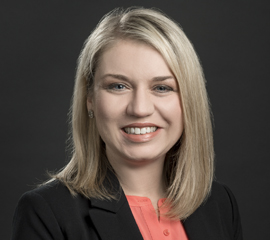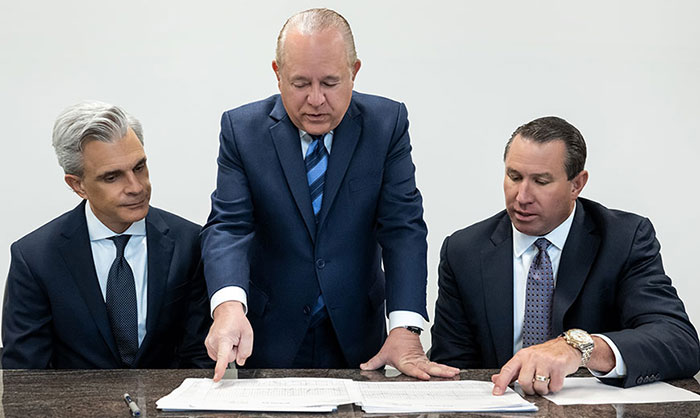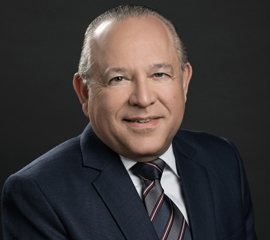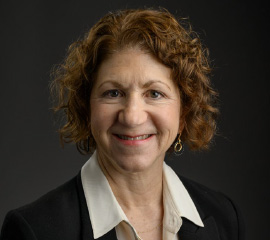Brain Imaging For HIE Birth Injuries
Hypoxic-ischemic encephalopathy (HIE) is a birth complication that can occur around the time of labor or delivery if the baby suffers from severe hypoxia (the baby’s brain is deprived of oxygen for a prolonged time.) HIE can lead to cerebral palsy or other severe neurologic defects in babies, and sometimes may even cause the baby’s death.

Imaging plays a critical role in the timely diagnosis and early medical intervention of HIE, thereby lowering the risks associated with HIE. Some of the key tools available for neuroimaging include magnetic resonance imaging (MRI), computed tomography (CT) and cranial ultrasound (CS).
The brain injury pattern in HIE depends on the duration and severity of hypoxia as well as the extent of the baby’s brain maturation. MRI, CT, and cranial US images can reveal the characteristic brain injury patterns associated with HIE to confirm the diagnosis and help predict neurological outcomes, such as cerebral palsy.
In a birth injury lawsuit involving an HIE brain injury, the MRI and other imaging is often important evidence that helps the birth injury lawyer “time” the injury and prove that HIE was avoidable had earlier intervention, like an emergency c-section, been performed.
How does an HIE injury continue to cause brain damage after birth?
The management of a baby with suspected hypoxic-ischemic encephalopathy requires early medical intervention. This is because when a baby suffers hypoxic ischemic encephalopathy (HIE), the damage can progress even after birth if aggressive therapy (such as brain cooling or hypothermia therapy) is not initiated in order to minimize the brain damage.

Here is the general HIE timeline describing the major events that occur after the baby suffers a hypoxic-ischemic insult (HII):
- Up to 12 hours after injury: The “acute” phase begins with significant involvement of the basal ganglia (structure near the brain center, responsible for motor control). It’s marked by focal cerebral lesions and focal cerebral infarction (aspects of cellular death).
- 12 to 24 hours after injury: Basal ganglia (BG) damage occurs in this phase, with nuclear pyknosis (degenerative changes) in the gray matter and coagulative necrosis (tissue death) in the white matter.
- 24 to 72 hours after injury: Significant signs of cellular swelling can be observed at this time due to brain edema (fluid buildup in the brain). The intra-cranial pressure (ICP) also increases, which can further injure the brain and spinal cord.
- 72+ hours after injury: This is the “sub-acute” phase of brain inflammation, marked by macrophage infiltration (to clear the dead brain cells and mineralization of the cellular residue). Selective nerve cell death may continue to occur in the basal ganglia, thalamus, and brain stem at this time.
MRI Tests can identify common brain injury patterns in HIE
The location and extent of the brain injury in babies following birth asphyxia can vary according to the timing, duration, and severity of the hypoxic-ischemic insult. Based on human and animal studies, researchers have identified three major patterns of brain injury in babies with HIE:
Basal Ganglia and Thalamus (BGT) Injury Pattern

Severe fetal hypoxia or birth asphyxia particularly affects those areas of the baby’s brain that have the maximum metabolic demand for oxygen. These areas include the basal ganglia (responsible for motor function) and thalamus (responsible for sensory information relay, learning and memory).
Cerebral lesions in BGT are strongly associated with impairment of motor neurodevelopment and cerebral palsy. The more severe the BGT lesions, the more severe will be the motor impairment and the greater will be the likelihood of cerebral palsy.
Note: Lesions are an abnormal area of the tissue inside the body that may indicate underlying injury or disease.
White Matter/Watershed (WM/WS) Injury Pattern

When birth asphyxia is mild to moderate (or partially prolonged), the blood flow is able to reach the areas of the brain, which have the highest need for energy supplied through oxygen and glucose. But this happens at the cost of the watershed areas of the cerebral arteries – which means, the cerebral arteries become deficient in oxygen and glucose. This causes an injury pattern is known as WM/WS or a parasagittal pattern of brain injury (distribution of injury along the brain’s vascular border zones). This damage is seen in MRI scans. In more severely injured babies, this brain injury pattern will also be seen in MRI scans in the subcortical white matter.
Initial neurological damage in babies is often limited in this type of injury, but neurological (“brain”) injury can worsen over time. Therefore, careful medical observation of the baby is important in these cases. An early follow-up between 12 to 18 months post-birth may indicate a normal outcome, but the baby is at risk of developing cognitive deficits with the passage of time. For this reason, long-term follow-up is recommended for a timely detection of disabilities and for making early interventions.
Near Total Injury Pattern
When the baby suffers from prolonged and very severe asphyxia (“profound”), it may result in near total brain injury, involving both the BGT (basal ganglia and thalamus) and white matter. The incidence of this injury pattern is less frequently reported than BGT and WM/WS injury patterns simply because the baby may be too sick to be scanned with MRI after birth, or may die before the imaging tests can be performed.
The conventional MRI scans and even more advanced diffusion weighted imaging (DWI) scans may underestimate the extent of brain injury in these cases. Researchers increasingly point to a superior role of some of the latest MRI technologies, such as diffusion tensor imaging (DTI) to properly detect the brain injury.
HIE Diagnosis: The Role of Imaging
Neuroimaging tests, such as magnetic resonance imaging (MRI), computed tomography (CT) and ultrasound (US) can help in identifying and determining the precise location, severity, and extent of the brain injury in babies with HIE.
Advanced imaging tests, such as magnetic resonance spectroscopy (MRS), diffusion weighted imaging (DWI) and diffusion tensor imaging (DTI) are more sensitive to detecting brain injury and can play a key role in the timely diagnosis and early medical intervention to improve outcomes of babies suffering an HIE birth complication.
Magnetic Resonance Imaging (MRI)
Conventional MRI
In the screening and evaluation of suspected HIE in babies, MRI is considered the gold standard because of its highly specific and sensitive imaging results. The MRI sequences commonly used in neonatal brain imaging are T1-weighted and T2-weighted scans, which are useful in evaluating the brain injuries in babies with fetal hypoxia and suspected HIE.
Note: Signal intensity of the tissue in an MRI scan refers to the “brightness” of the tissue revealed in the scan. The relative brightness (signal intensity) of the brain tissue indicates its condition or extent of damage to the medical observer.
Decreased T1 signal intensity indicates brain edema (as noticed in watershed damage in the white matter), while increased T2 signal intensity indicates a more severe (“profound”) neurological damage in the basal ganglia and thalamus (BGT).
HIE injuries will typically show on MRI:
- a. Increased basal ganglia signal intensity (T2)
- b. Increased thalamus signal intensity (T2)
- c. Decreased or non-existent signal intensity in the white matter (T1)
- d,e. Restricted water diffusion (when DWI technique is used for diffusion-weighted images)

When a baby has suffered an HIE birth injury, the abnormalities revealed in T1 and T2 MRI results are usually subtle in the first 72 hours after birth, and thereafter start becoming more apparent during the rest of the first week. In other words, these injuries become more apparent and noticeable on an MRI 2-3 days after the HIE injury has occurred. This is important in allowing a neuro-radiologist to “time” the HIE birth injury.
T1 and T2 images in an MRI scan together reveal the lesions (abnormal tissue) associated with HIE (which is not visible through ultrasound). T1 images show the fat and soft-tissue anatomy (to determine the fat-containing mass). On the other hand, T2 images reveal fluid anatomy and brain tissue abnormalities, such as brain trauma and inflammation. In practice, both T1 and T2 provide complementary information, and are reviewed together to characterize brain tissue abnormalities after an HIE injury.
Ultrasound and CT
In a suspected case of neonatal hypoxic-ischemic encephalopathy, the medical providers may use cranial ultrasound as the initial investigation technique during the first 24 hours (when an MRI may produce false-negative results—meaning that MRI does not reveal an HIE injury when one in fact exists).
A cranial ultrasound can successfully detect cystic PVL (brain tissue death around the ventricles), hydrocephalus (fluid buildup in the ventricles) and intracranial hemorrhage (brain bleeds).
On the other hand, ultrasound is not very accurate in detecting of cortical brain damage (injury to the cerebral cortex). The inter-observer variability in ultrasound exams is relatively high. This means, there are differences in the ultrasound measurements between two different medical observers. In comparison, computed tomography (CT) has a higher sensitivity (sharpness or accuracy) than ultrasound for detecting cortical injury and a relatively low inter-observer variation.
However, CT has a lower sensitivity and specificity than MRI to detect HIE in babies. Nevertheless, a CT scan is useful in identifying intracranial bleeds in very sick babies without involving sedation. (In case of MRI, the newborn will have to be sedated.) The downside of CT, compared to ultrasound, is that CT involves significant radiation exposure for the newborn.
Magnetic Resonance Spectroscopy (MRS)
Nuclear magnetic resonance spectroscopy (MRS) is a more advanced technique than conventional MRI that can be used to identify and understand brain injury patterns that develop after hypoxic-ischemic encephalopathy. In the deep gray matter of the brain, MRS measures the concentration levels of cerebral lactate and N-acetylspartate (NAA). Both of these measurements are important indicators of brain injury/damage.
When the baby’s brain is deprived of oxygen, it triggers chemical changes in the brain tissue leading to accumulation of cerebral lactate in the brain cells. Researchers have determined that distinctly elevated levels of lactate in the baby’s brain tissue are a key characteristic of birth asphyxia and an ischemic event.
Similarly, researchers have also established that low levels of NAA are indicated in a hypoxic/ischemic event in babies. With magnetic resonance spectroscopy (MRS), the concentration levels of lactate and NAA can be measured. Therefore, MRS has a good prognostic and predictive value in case of babies with suspected HIE.
MRI and MRS are different but complementary techniques, and can be used together to acquire a better understanding of the brain injury and the prognosis.
Diffusion Weighted Imaging (DWI)

In a healthy brain, neurons absorb and release water molecules as they transmit messages throughout the brain. This process is known as water diffusion in the brain. When a hypoxic-ischemic insult (brain injury) occurs in the baby with HIE, this water diffusion becomes restricted. This means, water accumulates in certain areas of the brain. This is the hallmark feature of HIE, which usually develops within one hour of the insult.
Diffusion weighted imaging (DWI) can show the restricted water diffusion (water accumulation) in the baby’s brain tissue. This lowering of the diffusion (measured as “apparent diffusion coefficient” or ADC) is a key determinant of the acute ischemic event (HIE) occurring in the baby. The immediate reduction in ADC indicates brain swelling (cytotoxic edema) which usually takes places within minutes of the ischemic event.
DWI can show the areas of the baby’s brain with reduced ADC, which represents an irreversibly damaged brain tissue. Low ADC values with DWI (indicating brain injury) can be noticed at a much earlier stage when the T1 and T2 weighted sequences from a conventional MRI are still not visible.
Brain abnormalities noticed in DWI scans usually peak (meaning are most visible) within three to five days following the HIE birth injury and usual normalize (disappear) in about 11 to 12 days for babies who receive therapeutic hypothermia.
Diffusion Tensor Imaging (DTI)

Water molecules in the brain do not diffuse uniformly through all structures of the brain. In case of white matter (present in the subcortical or deeper tissues of the brain), water diffusion occurs parallel to the white matter fibers. During a hypoxic-ischemic event, the water diffusion not only gets restricted, but also changes its direction.
While Diffusion Weighted Imaging (DWI) can only measure the restricted diffusion (water accumulation), Diffusion Tenson Imaging (DTI) goes a step further and also measures the changes to the direction of the diffusion.
The analysis of the water diffusion pattern (known as anisotropy) helps trained radiologists evaluate the extent of ischemic, inflammatory, and traumatic brain tissue damage (lesions). DTI can detect changes to the cortical neuron connections (cortex damage after white matter injury) – even when the conventional MRI images show normal brain structure and function (normal signal intensities).
Can DTI Predict Cerebral Palsy in Babies with HIE?
Multiple research studies have documented the diagnostic accuracy of DTI in case of babies with suspected HIE. One study of 10 babies with HIE conducted within two weeks after birth found that DTI-based evaluation showed consistently abnormal results even when the measurements with MRI were totally unremarkable.
Another study involving 20 babies with HIE found that fractional anisotropy (FA) values – measuring the water molecules movement with DTI – were abnormal, even when ADC values (measured with DWI) showed normal results.
Based on the results of these studies, researchers suggested an imaging roadmap for babies with HIE as follows:
- 1. Use conventional MRI with DWI for the prediction and early detection of cerebral palsy in cases of severe fetal hypoxia.
- 2. Where mild to moderate HIE is suspected, but the MRI scan appears normal, perform DTI with accurate measurement and interpretation of FA values to lower the possibility of missing out cases of HIE and for an early prediction of cerebral palsy.
Researchers concluded that using advanced MRI tests such as DTI to evaluate term babies with HIE is a more accurate technique to predict neurodevelopmental outcomes, primarily cerebral palsy.
MRI Scoring System to Quantify Brain Injury
A number of MRI scoring systems have been proposed by researchers over the years to quantify the extent and severity of brain injury and predict the outcomes for babies with HIE. The Neonatal Research Network at the National Institute of Child Health and Human Development (NICHD) has developed a system that grades HIE brain injury in babies using six categories:
Note: Lesions are an abnormal area of the tissue inside the body that may indicate underlying injury or disease.
- Score 0 – Normal
- Score 1A – Cerebral lesions in sub-cortical areas
- Score 1B – More extensive lesions in sub-cortical areas
- Score 2A – Lesions in basal ganglia, thalamus and the internal capsule
- Score 2B – Lesions in 2A areas and cerebral areas
- Score 3 – Cerebral hemispheric devastation

How does the timing of a Brain MRI relate to Diagnosing and Timing of HIE?
For the correct interpretation of MRI results, the timing of MRI tests is critical. This is because brain injury patterns on different types of MRI tests will vary significantly during the first two weeks after the hypoxic-ischemic encephalopathy (HIE) birth complication because the actual brain damage may continue to evolve over this time period. The optimal timing of MRI remains a matter of controversy, but researchers agree that early MRI is preferred over delayed scanning.
With the availability of advanced MRI techniques, such as DWI and DTI, it’s possible to detect brain abnormalities early before pseudo-normalization sets in. This means if brain imaging tests are delayed after an ischemic event, the MRI scans may show false-negative or pseudo results close to normal.
Therefore, with advanced DWI and DTI techniques, the MRI tests can be conducted quickly in a baby with suspected HIE, and there is a better possibility to prognosticate and predict neurodevelopmental outcomes, such as cerebral palsy.
According to researchers, MRI may also be performed during the application of therapeutic hypothermia without adversely affecting the therapy’s efficacy. When there is a high suspicion of brain injury prior to birth, it is a key clinical indicator to perform MRI during the brain cooling process because this would allow for adjustment of the therapy for better outcomes.
It’s noteworthy that during the first 24 hours after the HIE birth injury, the MRI may provide false-negative results—meaning that even though an HIE injury has occurred it is not visible on the MRI at this time. At this time, cranial ultrasound performed by trained medical professionals should be the first neuroimaging modality of choice to assess the presence of brain damage.
Computed tomography (CT) should only be used in emergency when cranial ultrasound is not available because of the radiation-related future malignancy risks and the risk of damage to the baby’s intellectual development.
The Newborn Brain Society Guidelines and Publications Committee recommends that an MRI for babies with HIE should be performed immediately after therapeutic hypothermia (or two to five days after birth) to confirm the HIE diagnosis and predict outcome.
A second MRI (repeat scanning) is generally not required, but should considered at 10 to 14 days after birth if the medical providers find a difference between the early MRI results and the baby’s clinical condition, or if the first MRI led to ambiguous results. It is well-known that some baby’s MRI results may be negative after the completion of cooling treatment even though they have suffered from an HIE birth injury.
Clinical trials in recent years have shown that selective brain cooling in the form of therapeutic hypothermia helps in improving the neurological outcomes in babies with HIE. Therefore, timely diagnosis and early medical intervention is the prime objective in the management of babies with suspected hypoxic-ischemic encephalopathy.
Is Your Child’s Birth Injury the Result of Medical Malpractice?
Parents whose children suffer from birth injuries or birth complications want and deserve answers as to cause of their child’s injury and whether mistakes by the doctors and nurses contributed to the injury.
- Were there signs of a birth injury during the pregnancy, labor, and delivery process, or presence of risk factors, which were either not recognized or properly treated?
- Did the medical team fail to order a series of tests to diagnose a suspected birth complication in a timely manner?
- Was the decision to perform a cesarean delivery delayed?
- During the labor and delivery, were there clear indications that their baby was suffering from fetal distress, but appropriate actions were not taken by the obstetrician or nurses?
- Did the neonatal resuscitation team delay in providing important breathing support after birth?
- Were serious neonatal conditions like hypoglycemia or jaundice missed or treated incorrectly?
- Should brain cooling (also called “hypothermia therapy”) have been offered to your baby, but the doctors and nurses failed to perform the appropriate tests or ignored the results of the tests?
The experienced birth injury lawyers at Miller Weisbrod Olesky, who have been through the legal battlefields before, will help you determine if mistakes of the medical providers caused a birth injury to your child, including Hypoxic-Ischemic Encephalopathy (HIE) or cerebral palsy. Our profound and proven birth injury attorneys have represented families all over the United States in their time of need after a birth injury. We use our experience and expertise to obtain you and your child a medical malpractice settlement that will help provide specialized medical therapy in order to maximize the quality of life and independence of your child throughout their life.
Sometimes families are reluctant to contact a medical malpractice lawyer. It’s also not uncommon for parents to feel overwhelmed by the responsibilities they encounter in caring for their injured child and worried that they will not be able to help out in a lawsuit involving their child’s birth injury. Our birth injury attorneys and nursing staff will address these hesitations and concerns, so you can focus on your child and maximizing their care.
Registered Nurses and Nurse-Attorneys Are a Vital Part of Our Birth Injury Team…and Yours

Most birth injury law firms will employ one or two nurses to assist the review of cases and medical research. But Miller Weisbrod Olesky offers an unmatched number of nurses and nurse-attorney employees support to both the birth injury attorneys and our clients.
Our team of registered nursing staff and nurse-attorneys bring a deep level of medical and personal insight to every client’s case. Our nursing team includes both an experienced labor and delivery nurse as well as an ICU nurse. Working closely with the rest of the team, they investigate the reasons behind a birth injury and how medical professionals breached their standard of care.
Meet our Legal Nursing Team
Linda Chalk

As a registered nurse, Linda practiced ICU nursing for 44 years while caring for a wide range of patient conditions. She has worked closely with founding partner Les Weisbrod for over 30 years, investigating and pursuing birth injury cases.
Along with DJ Weisbrod, Linda heads up the firm’s birth injury intake, screening, and medical literature research team. She personally screens all potential cases to ensure that medical issues have been addressed before we file lawsuits on behalf of birth-injured children and their families.
DJ Weisbrod

Before joining Miller Weisbrod, DJ practiced as a surgical nurse in various hospital and operative settings. She has been with the firm over 30 years.
DJ directs Miller Weisbrod’s birth injury intake and medical screening team. She has also served as firm founder Les Weisbrod’s trial nurse for all cases involving medical negligence and birth injury.
Linda Cuaderes

Linda Cuaderes is both a registered nurse and a licensed lawyer. Linda works exclusively in Miller Weisbrod’s Birth Injury and Medical Malpractice section. Linda acts as the firm’s patient advocate and liaison with our young clients and their parents.
Linda combines her legal and nursing experience along with her exceptional organizational talent and attention to detail to make sure each child we represent is provided the highest level of medical care and attendant care during the pendency of their case. Linda communicates with our parent clients regularly to monitor their birth injured child’s treatment, provide guidance as to additional care and therapies and when necessary assist them in obtaining specialized medical providers.
Linda was raised in Bartlesville, Oklahoma and completed her Bachelor of Science in Nursing with Honors at the University of Oklahoma. She started as an Oncology Nurse at Presbyterian Hospital in Oklahoma City, quickly becoming the Assistant Head Nurse of the Outpatient Endoscopy Unit. Linda then entered the University of Oklahoma College of Law.
Following graduation, Linda joined Les Weisbrod in the Medical Malpractice Section. After taking time off to raise her three lovely children, Linda returned to Miller Weisbrod and her passion of holding healthcare providers accountable for preventable errors. Linda is active in the American Association for Justice, Texas Trial Lawyers Association, Dallas Trial Lawyers Association, and the Texas Bar Association. Linda is an active member of the Birth Trauma Litigation Group and Medical Negligence Section of the American Association for Justice.
She is admitted to practice before the Texas Supreme Court and routinely works on cases pending throughout the United States. Linda has worked with child victims of birth injury, their parents and other victims of medical malpractice in Texas, New Mexico, Oklahoma, Arkansas, Louisiana, Iowa, Ohio, New York, Alabama, Georgia, Arizona, Utah and Missouri.
Education
- University of Oklahoma - School of Law, 1990, J.D. - Norman, Oklahoma
- University of Oklahoma - School of Nursing, 1985 - Norman, Oklahoma
Areas of Practice
- Birth Injury/Birth Trauma
- Medical Malpractice
Associations & Memberships
- Texas Bar Association
- American Association of Justice
- Texas Trial Lawyers Association
- Dallas Trial Lawyers Association
Kristin Jones

Kristin combines her medical and legal training to provide invaluable, passionate service to parents struggling to care for their birth-injured children.
Families often have questions as they go through the birth injury lawsuit process. Kristin diligently identifies and investigates all medical issues so the birth injury attorneys at Miller Weisbrod can answer those questions Kristin ensures that our birth injured children’s medical records are thoroughly reviewed and organized. Miller Weisbrod’s birth trauma litigation attorneys and medical experts retained by the firm need her services while pursuing justice for our clients.
Kelly Kunkel

Kelly Kunkel was born and raised in Dallas, Texas. She has 15 years’ experience in hospital based High Risk Obstetrics and Labor and Delivery bedside nursing care. Kelly graduated with an Associate’s Degree in Nursing from El Centro College in December of 1990 and received her Bachelor’s Degree in Nursing from West Texas A & M University in 2008; graduating with honors.
In addition, Kelly has over 25 years’ experience in medical malpractice case management and litigation and has worked with David Olesky for over 22 years. After many years of assisting in defending healthcare providers and hospital systems in medical malpractice cases involving complex litigation matters related to birth injury, catastrophic injury and death, Kelly has proudly joined David Olesky in the national birth injury and medical negligence practice at Miller Weisbrod Olesky.
Why Should You Talk with the Knowledgeable Attorneys at Miller Weisbrod Olesky?

The only way to find out if you have a birth injury case is to talk to a lawyer experienced in birth injury lawsuits. It’s not uncommon that a birth related complication results in a preventable birth injury, including cerebral palsy, but it takes a detailed expert review by a birth injury attorney of the medical records from your child’s birth to determine if the birth injury was the result of medical malpractice.
At Miller Weisbrod Olesky, a team of committed lawyers, nurses and paralegals uses our detailed medical negligence case review process to assess your child’s potential birth injury case. We start by learning more about you and your child and the status of meeting/missing developmental milestones. Then we gather medical records to determine what happened before, during, and after your delivery. We call in skilled medical experts who review your records and let us know if they think medical errors could have caused your child’s injuries.
If we feel medical negligence caused or contributed to your child’s injuries, we meet with you to discuss how you can receive compensation from the medical professionals who made the errors. Our birth injury attorneys have recovered millions of dollars in settlements for families of children that have suffered a birth injury.
At no point in our legal intake process will we ask you to pay anything. The medical review of your case and the consultation are free. We only receive payment when you do.
Contact Our Birth Injury Lawyers
Our Birth Injury Attorneys
Les Weisbrod

Les Weisbrod has been on the cutting edge of the national birth injury litigation scene for almost 40 years.
As a national birth injury attorney, Les has settled over 204 medical negligence cases for more than $1,000,000. He also obtained settlements in 75 birth injury cases for over $1,000,000 each.
His $31 million verdict against Baylor University Medical Center in Dallas was one of the top 100 verdicts in the United States that given year.
Les is recognized nationally and internationally as one of the top plaintiff’s medical malpractice trial lawyers in the United States. But the recoveries for the clients and the differences made in the lives of the children and families Les has represented tell only part of the story.
Les has worked with his law partner Clay Miller for years to build a one-of-a-kind law firm.
Miller Weisbrod Olesky provides unique and unparalleled services to families of birth-injured and brain-injured children from the moment the firm decides to take the case.
The registered nurses and registered nurse-attorneys on staff are valuable team members who assist Miller Weisbrod birth-injury clients. Les has designed a system where each birth injured child is assigned a nurse-attorney liaison to guide them through the process of medical treatment/evaluation, therapies, home assistance, and quality of life improvement.
Miller Weisbrod’s unmatched service allows families to better cope with the immediate challenges facing our young clients.
Birth-injured children and their families are Les and Miller Weisbrod’s priority.
Les and the attorneys at Miller Weisbrod fight for the justice their clients are entitled to under our nation’s system of justice.
This fighting spirit has taken Les across the United States to represent clients in birth injury and medical negligence cases. In fact, he has personally handled cases not only in Texas but also in Arkansas, Arizona, Colorado, Oklahoma, Louisiana, Utah, Iowa, Ohio, Oregon, Montana, Alabama, Georgia, Florida, and New York.
Les and Miller Weisbrod continue to expand their reach of helping brain-injured children to new states each year as we strive to bring a sense of justice to each affected family. And Les is not the only one who notices he fights for his clients.
Michael Rustad, a Professor of Law at Suffolk University Law School in Boston who has done extensive research on punitive damage awards, says,
“Les Weisbrod has obtained more medical malpractice punitive damage jury verdicts for his clients than any other attorney in the United States.”
Also, a well-known defense medical malpractice attorney dubbed Les Weisbrod the “pitbull” of the Texas medical malpractice bar in a media profile of Les published by a major newspaper.
Les shares his experience and knowledge to improve the representation of all birth-injured children and their families.
In the early 1990s, Les recognized that a more focused effort needed to be made to educate attorneys who handle birth injury cases. As a result, Les was the founding Co-Chair of the American Association for Justice (AAJ) Birth Trauma Litigation Group in 1991. He also was a founding Co-Chair of AAJ’s Medical Negligence Litigation Group in 1999 and served as Chair of AAJ’s Professional Negligence Section in 1996.
Combined, these groups have put on more than a hundred continuing education seminars across the United States. helping to educate other attorneys by bringing in world-renowned experts in the fields of:
- labor and delivery
- neonatal care
- the care and treatment of birth-injured children, including those suffering from cerebral palsy and hypoxic-ischemic encephalopathy (HIE)
Education and professional experiences back up his dedication to helping children and families harmed by medical malpractice.
Les received his B.A. magna cum laude in 1975 from Claremont Men’s College and his J.D. in 1978 from Southern Methodist University Law School.
He is Board Certified by the Texas Board of Legal Specialization in Personal Injury Trial Law and Civil Trial Law.
Les was a past president of the Dallas Trial Lawyers Association in 1993. He has been a member of the Texas Trial Lawyers Association Board of Directors since 1990.
His work with the American Association for Justice (AAJ) (formerly ATLA) includes serving as President, President-Elect, Vice President, Secretary, Treasurer, and Parliamentarian. Mr. Weisbrod has also served on the AAJ Board of Governors since 1998 and the 17-member Executive Committee of AAJ since 2001. In 1990, he was chosen as a Rising Star of the ATLA and presented a paper entitled “Dirt and Greed: A New Look at Medical Malpractice Cases.”
Les has written and lectured extensively on birth injury litigation, medical malpractice, and medical product topics.
Les is a contributing author to the 1996 text Operative Obstetrics published by Williams & Wilkins. He also co-authored the “Drugs & Medical Devices” chapter in AAJ’s Litigating Tort Cases.
He also has lectured to lawyer groups across the U.S., Canada, England, and Australia.
Education
- Southern Methodist University - School of Law, J.D. - Dallas, Texas, 1978
- Claremont Men's College - B.A. - Claremont, California, 1975
Areas of Practice
- Medical Malpractice
- Birth Injury/Birth Trauma
- Products Liability
- Personal Injury
Associations & Memberships
- State Bar of Texas
- National Association Of Distinguished Counsel
- Million Dollar Advocates Forum
- Multi-Million Dollar Advocates Forum
- American Association for Justice
- Texas Trial Lawyers Association
- Dallas Trial Lawyers Association
- Pan-European Organization of Personal Injury Lawyers
- American Society of Law and Medicine
- Consumer Attorneys of California
- Arkansas Trial Lawyers Association
- Louisiana Trial Lawyers Association
- Dallas and American Bar Associations
- ABOTA (American Board of Trial Advocates)
Clay Miller

Clay is Board Certified in Personal Injury Trial Law by the Texas Board of Legal Specialization. Clay has practiced solely in the field of catastrophic injury and wrongful death since graduating from law school. His practice has been limited to the representation of victims. Over the past twenty-four years, Clay has successfully settled or tried to verdict cases in the areas of vehicular negligence, medical malpractice, construction site accidents, workplace injury, premises liability, and commercial trucking and a nationwide business loss case (suits filed in a dozen different states) involving defective truck engines sold to trucking companies.
Clay represented dozens of trucking companies in lost profit and diminished value claims against Caterpillar in 2010 through 2012. These cases were filed in over a dozen states with the bellwhether trial set in Federal Court in Davenport, Iowa. After intense litigation and trial preparation, a global confidential settlement was reached for all the clients.
Clay's most recent 2017 victories are a $30,800,000 jury verdict in Tennessee arising from fraud claims in the sale of heavy-duty truck engines and a $26,500,000 jury verdict in a construction accident, obtained within 60 days of each other.
Clay was raised in Lewisville, Texas and completed his undergraduate degree in Finance at
Texas A & M University. Following graduation from Southern Methodist University School of law, Clay worked for two Dallas firms representing victims. In 1998, Clay began his own practice before forming his current partnership. In addition to his law practice, Clay has lectured at seminars and published in the areas of construction accidents, jury selection techniques, medical negligence, trucking accidents and settlement tactics.
He is active in local and statewide trial lawyers' associations including serving as the Chair of the Advocates for the Texas Trial Lawyers' Association in 2002 and remains on the Board of Directors. Clay served as President of the Dallas Trial Lawyers Association from 2008-2009. He has also been a member of the American Board of Trial Advocates (ABOTA) since 2014.
Education
- Southern Methodist University School of Law - Dallas, Texas
- Texas A&M University - Finance - College Station, Texas
Areas of Practice
Associations & Memberships
- State Bar of Texas
- State Bar of New Mexico
- State Bar of Colorado
- American Board of Trial Advocates (ABOTA)
- Texas Trial Lawyers Association
- Dallas Trial Lawyers’ Association
- American Association of Justice
David Olesky

David Olesky is Vice Chair of the Health Care Professional Liability practice. David is a trial lawyer focusing his practice on complex litigation matters that involve defending and protecting clients in all types of cases related to catastrophic injuries or death, but with a special focus on birth injury cases. David regularly advises his health care clients on the issues and challenges that they face on a daily basis. Clients repeatedly look to him for guidance to handle such high stakes cases and matters in Texas and jurisdictions outside of Texas.
David has earned the trust and reliance of clients he has worked with by consistently getting the results that matter most to them, whether that is a win at trial or a favorable outcome through alternative dispute resolution outside the courthouse. Through his representation, David demonstrates a true loyalty and hardworking commitment to the clients that he serves.
David believes the foundation of any client relationship is to act as a trusted advisor instead of simply as a litigator. Clients value his earnest representation of their business interests, accompanied by a devotion to understanding their businesses, prompt attention to their immediate needs and the challenges they face in their individual roles.
Education
- Southern Methodist University Dedman School of Law, J.D., 1992 - Dallas, Texas
- University of Texas, B.B.A, 1989 - Austin, Texas
Areas of Practice
Associations & Memberships
- American Bar Association
- Dallas Bar Association
- Dallas Bar Foundation Fellow
- Texas Bar Association
Alexandra V. Boone

Alexandra Boone is a partner in Miller Weisbrod. She concentrates her legal practice in the area of birth injury, medical malpractice and mass tort products liability. Alex currently works directly with firm partner Les Weisbrod in managing the birth injury docket and working with the firm’s highly qualified expert witnesses in the review of potential cases. Alex also litigates her own docket of medical negligence cases.
Over the course of her 17 years with the firm, Alex has focused on the administration and prosecution of mass tort litigation, originally focusing on occupational toxins, but more recently in the area of pharmaceuticals and medical devices. In the past, she has actively pursed cases involving hormone therapy, Vioxx, Fosamax, and Reglan. Alex was also instrumental in our firm successfully resolving thousands of cases transvaginal mesh, hip prosthetics, and the blood thinner Xarelto. She is actively prosecuting over 1,000 cases.
In addition to being a member of the Texas bar, she is also licensed in Oklahoma and is a member of the American Association of Justice, Texas Trial Lawyers Association, Oklahoma Association of Justice and the Dallas Trial Lawyers Association.
Education
- Baylor University - School of Law, 1996, J.D. - Waco, Texas
Areas of Practice
- Products Liability
- Mass Tort
Associations & Memberships
- State Bar of Texas
- American Association of Justice
- Texas Trial Lawyers Association
- Oklahoma Association of Justice
- Dallas Trial Lawyers Association
Pro Bono Activities
- East Texas Legal Services/Nix Law Firm Pro Bono Project, 1996 - 1997
Robert Wolf

Robert E. Wolf was born in Dallas, Texas and graduated Magna Cum Laude as a proud horned frog from Texas Christian University in 1997, with Bachelor of Science degree in Political Science and was inducted into Phi Beta Kappa and Mortar Board. He obtained his law degree from Southern Methodist University in 2000 while serving as an Articles Editor for the International Law Review and winning awards at Mock Trial and Appellate competitions.
Robert has been named a Thomson Reuters | Texas Super Lawyers Rising Star (less than 2.5% of attorneys in Texas receive this distinction) in 2011, 2012, 2013, 2014, and 2015. Further, Robert was recognized as a National Trial Lawyers Top 40 Under 40 attorney for Texas in 2012 (no more than 40 attorneys in Texas are eligible for this award annually).
Robert brought his passion for and over 14 years of experience of representing seriously injured individuals and their families to Miller Weisbrod in January 2015, and has concentrated his legal practice in the area of medical malpractice, products liability, and pharmaceutical/mass tort litigation. He is a member of the State Bar of Texas, American Association for Justice, Texas Trial Lawyers Association, and Dallas Trial Lawyers Association.
In addition to many successful jury verdicts and settlements across Texas, Oklahoma, Iowa, Wisconsin, and Idaho, Robert’s role as an attorney representing victims and their families has led to numerous changes to key safety practices and policies and procedures at corporations and medical facilities.
Robert and his wife Suzy also get plenty of exercise trying to keep up with their precious and very active daughter.
Education
- Southern Methodist University - Dedman School of Law, J.D. - 2000 - Dallas, Texas
- Texas Christian University - B.S. Political Science - 1997 - Fort Worth, Texas
Areas of Practice
- Medical Malpractice
- Personal Injury
- Products Liability
Associations & Memberships
- State Bar of Texas
- American Association of Justice
- Texas Trial Lawyers Association
- Dallas Trial Lawyers Association
Carrie Vine

Carrie Lynn Vine has over 15 years of experience in medical malpractice litigation, with a particular focus in representing children and families who have suffered birth injuries as a result of the negligence of either doctors, nurses or hospitals.
She is a passionate advocate for her clients and has handled hundreds of birth injury and birth trauma cases throughout the United States. As part of Carrie’s national birth injury legal practice, she has handled cases in Texas, Arkansas, California, Nevada, Kentucky, Georgia, Illinois, Wisconsin, Ohio, Pennsylvania, North Carolina, South Carolina, Florida, and North Dakota. She is determined to seek justice and works to obtain fair compensation for the children and families she represents.
Carrie earned her law degree from Northern Illinois University where she tutored other law students. Prior to law school, she received her undergraduate degree from the University of Notre Dame in Biomedical and Biological Science, and earned both a Master’s Degree and a Ph.D. from The Pennsylvania State University in Anthropological Genetics. She then conducted post-doctoral research at the University of Michigan Medical School before deciding to attend law school. She applies an academic mindset and love of science and medicine to mastering the medical principles and literature relevant to the cases she pursues.
Carrie is an active member of the American Association of Justice as well as the Birth Trauma Litigation Group (BLTG).
Education
- Northern Illinois University:
Law School
- University of Notre Dame:
Biomedical Science
- Pennsylvania State University:
Anthropological Genetics
Areas of Practice
- Birth Injury/Birth Trauma
- Medical Malpractice
Associations & Memberships
- American Association of Justice:
Member
- Birth Trauma Litigation Group:
Member
Larry Lassiter

Lawrence R. Lassiter is an AV-rated attorney with more than twenty years of experience in appellate and trial advocacy. He has been consulted by attorneys across the country to conduct research, evaluate cases, prepare appellate and trial briefs, and formulate litigation strategy. He has prepared hundreds of appellate briefs in federal and state appellate courts, including the highest courts of Texas, West Virginia, Georgia, Oklahoma, Ohio, Nebraska and Tennessee, and he is member of the Bar of the United States Supreme Court. Larry has a national appellate and legal briefing practice. Larry has filed extensive briefs and/or argued before either state or federal courts in 30 out of 50 states in his career.
Larry assists the Birth Injury team in all aspects of legal briefing. Unlike many other birth injury firms across the United States, Miller Weisbrod has an attorney dedicated to handling legal briefing on behalf of our clients across the country. Larry has handled extensive briefing in birth injury and other medical malpractice cases in Texas, New Mexico, Arkansas, Oklahoma, Iowa, Ohio, Alabama, Georgia, New York, Utah, Arizona, Louisiana and West Virginia.
Since joining Miller Weisbrod in 2010, Larry has won a number of important victories vindicating the rights of our clients in both state and federal appellate courts, including Vitacost.com, Inc. v. McCants, 210 So.3d 761 (Fla. Ct. App. 2017); TTHR Ltd. Partnership v. Moreno, 401 S.W.3d 41 (Tex. 2013); In re E.B., 729 S.E.2d 271 (W. Va. 2012); Mid-Continent Cas. Co. v. Davis, 683 F.3d 651 (5th Cir. 2012); Rouhani v. Morgan, 2017 WL 3526719 (Tex. App. – Houston [1st Dist.] 2017, no pet.); Mid-Continent Cas. Co. v. Andregg Contracting, Inc., 391 S.W.3d 573 (Tex. App. – Dallas 2012).
He was as a judicial clerk for the Honorable Harlington Wood Jr., Circuit Judge, United States Court of Appeals for the Seventh Circuit. Larry was a University of Iowa Presidential Scholar and served as Editor in Chief of the Iowa Law Review.
Larry is an active member of the American Association for Justice. He is a member of AAJ’s Birth Injury Litigation Group and Medical Negligence Sections.
Education
- University of Iowa - Political Science & History - B.A. - Iowa City, Iowa
- University of Iowa - School of Law - J.D. - Iowa City, Iowa
Areas of Practice
- Appellate Advocacy
- Medical Malpractice
- Pharmaceuticals & Medical Devices
- Products Liability
- Personal Injury
Associations & Memberships
- State Bar of Texas
- American Association of Justice
- Texas Trial Lawyers Association
- Dallas Trial Lawyers Association
Laurie Pierce

Laurie draws upon extensive experience in state and federal courts with a focus on complex claims involving medical malpractice cases. After many years of defending health care providers and hospital systems in medical malpractice cases, Laurie joined David Olesky in the national birth injury and medical negligence practice at Miller Weisbrod Olesky.
Laurie’s focus is to understand not only the facts and circumstances of the matter at hand, but to understand the specific needs and goals of the client and their unique business considerations. Her extensive background in commercial litigation provides a foundation that enhances her health care litigation practice. She works with clients that require more than a strong trial lawyer; they expect an attorney who understands the relationship between law and their specific business and who will work tirelessly to protect their rights, interests and bottom line.
Education
- Southern Methodist University:
Dedman School of Law - 1992
- Order of the Coif:
Journal of Air Law and Commerce, J.D. - 1992
- Miami University-Oxford, Ohio
B.S. Education - 1982
Areas of Practice
- Birth Injury/Birth Trauma
- Health Care Industry
- Health Care Litigation
- Litigation and Dispute Resolution
- Medical Malpractice
Associations & Memberships
- American Association for Justice
- American Bar Association
- Dallas Bar Association
- Dallas Bar Foundation Fellow
- Texas Bar Association
Distinctions
- Admitted to Pro Bono College of State Bar of Texas in 2019 for outstanding delivery of legal services to low-income Texans
Court Admissions
- United States Supreme Court
- U.S. District Court, Eastern District of Texas
- U.S. District Court, Northern District of Texas
- U.S. District Court, Southern District of Texas
- U.S. District Court, Western District of Texas
Linda Cuaderes

Linda Cuaderes is both a registered nurse and a licensed lawyer. Linda works exclusively in Miller Weisbrod’s Birth Injury and Medical Malpractice section. Linda acts as the firm’s patient advocate and liaison with our young clients and their parents.
Linda combines her legal and nursing experience along with her exceptional organizational talent and attention to detail to make sure each child we represent is provided the highest level of medical care and attendant care during the pendency of their case. Linda communicates with our parent clients regularly to monitor their birth injured child’s treatment, provide guidance as to additional care and therapies and when necessary assist them in obtaining specialized medical providers.
Linda was raised in Bartlesville, Oklahoma and completed her Bachelor of Science in Nursing with Honors at the University of Oklahoma. She started as an Oncology Nurse at Presbyterian Hospital in Oklahoma City, quickly becoming the Assistant Head Nurse of the Outpatient Endoscopy Unit. Linda then entered the University of Oklahoma College of Law.
Following graduation, Linda joined Les Weisbrod in the Medical Malpractice Section. After taking time off to raise her three lovely children, Linda returned to Miller Weisbrod and her passion of holding healthcare providers accountable for preventable errors. Linda is active in the American Association for Justice, Texas Trial Lawyers Association, Dallas Trial Lawyers Association, and the Texas Bar Association. Linda is an active member of the Birth Trauma Litigation Group and Medical Negligence Section of the American Association for Justice.
She is admitted to practice before the Texas Supreme Court and routinely works on cases pending throughout the United States. Linda has worked with child victims of birth injury, their parents and other victims of medical malpractice in Texas, New Mexico, Oklahoma, Arkansas, Louisiana, Iowa, Ohio, New York, Alabama, Georgia, Arizona, Utah and Missouri.
Education
- University of Oklahoma - School of Law, 1990, J.D. - Norman, Oklahoma
- University of Oklahoma - School of Nursing, 1985 - Norman, Oklahoma
Areas of Practice
- Medical Malpractice
- Birth Injury/Birth Trauma
Associations & Memberships
- Texas Bar Association
- American Association of Justice
- Texas Trial Lawyers Association
- Dallas Trial Lawyers Association
Kristin Jones

Kristin combines her medical and legal training to provide invaluable, passionate service to parents struggling to care for their birth-injured children. Families often have questions as they go through the birth injury lawsuit process. Kristin diligently identifies and investigates all medical issues so the birth injury attorneys at Miller Weisbrod can answer those questions. Kristin ensures that our birth injured children’s medical records are thoroughly reviewed and organized. Miller Weisbrod’s birth trauma litigation attorneys and medical experts retained by the firm need her services while pursuing justice for our clients.
Education
- SMU Dedman School of Law - Dallas, Texas
- University of Texas at Arlington - Arlington, Texas
Areas of Practice
- Medical Malpractice
- Birth Injury/Birth Trauma
Associations & Memberships
- State Bar of Texas
- American Association of Justice
- Texas Trial Lawyers Association
Matt Adair

Matt Adair is an attorney specializing in medical malpractice, products liability, and pharmaceutical litigation. He received his bachelor’s degree in Philosophy from the University of Notre Dame. During his time there, he studied abroad at the New College at Oxford University in Oxford, England.
Matt is a member of the State Bar of Texas, American Association for Justice, Texas Trial Lawyers Association, and Dallas Trial Lawyers Association.
Education
- University of Notre Dame - Philosophy, B.A. 2012 - Notre Dame, Indiana
- Baylor University - School of Law J.D. 2015 - Waco, Texas
Areas of Practice
- Medical Malpractice
- Products Liability
- Pharmaceutical Litigation
Associations & Memberships
- State Bar of Texas
- American Association of Justice
- Texas Trial Lawyers Association
- Dallas Trial Lawyers Association
Garrett Stanford

Garrett Stanford was born in Dallas, Texas and graduated from Southern Methodist University in 2017 with a B.A. in Political Science. After graduation, he attended Baylor University School of Law. During his time at Baylor, he was a member of the Order of the Barristers and he won the Judge W.C. Davis Endowed Criminal Practice Professional Track Award. He obtained his law degree and license to practice law in 2020.
Garrett joined Miller Weisbrod in August 2021. His legal practice is concentrated in the area of birth injury and medical malpractice. Garret is actively involved in handling birth injury and medical malpractice cases in Texas, Ohio, Utah, Arkansas and Oklahoma.
Education
- Southern Methodist University - Political Science, B.S. - Dallas, Texas
- University of Baylor - School of Law, J.D. - Waco, Texas
Areas of Practice
- Medical Malpractice
- Birth Injury/Birth Trauma
Associations & Memberships
- State Bar of Texas
